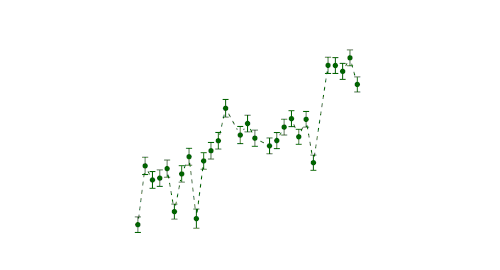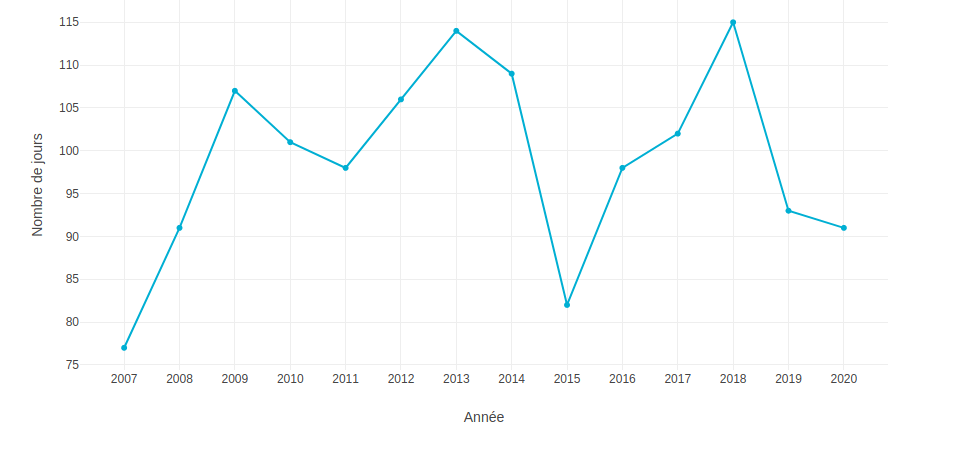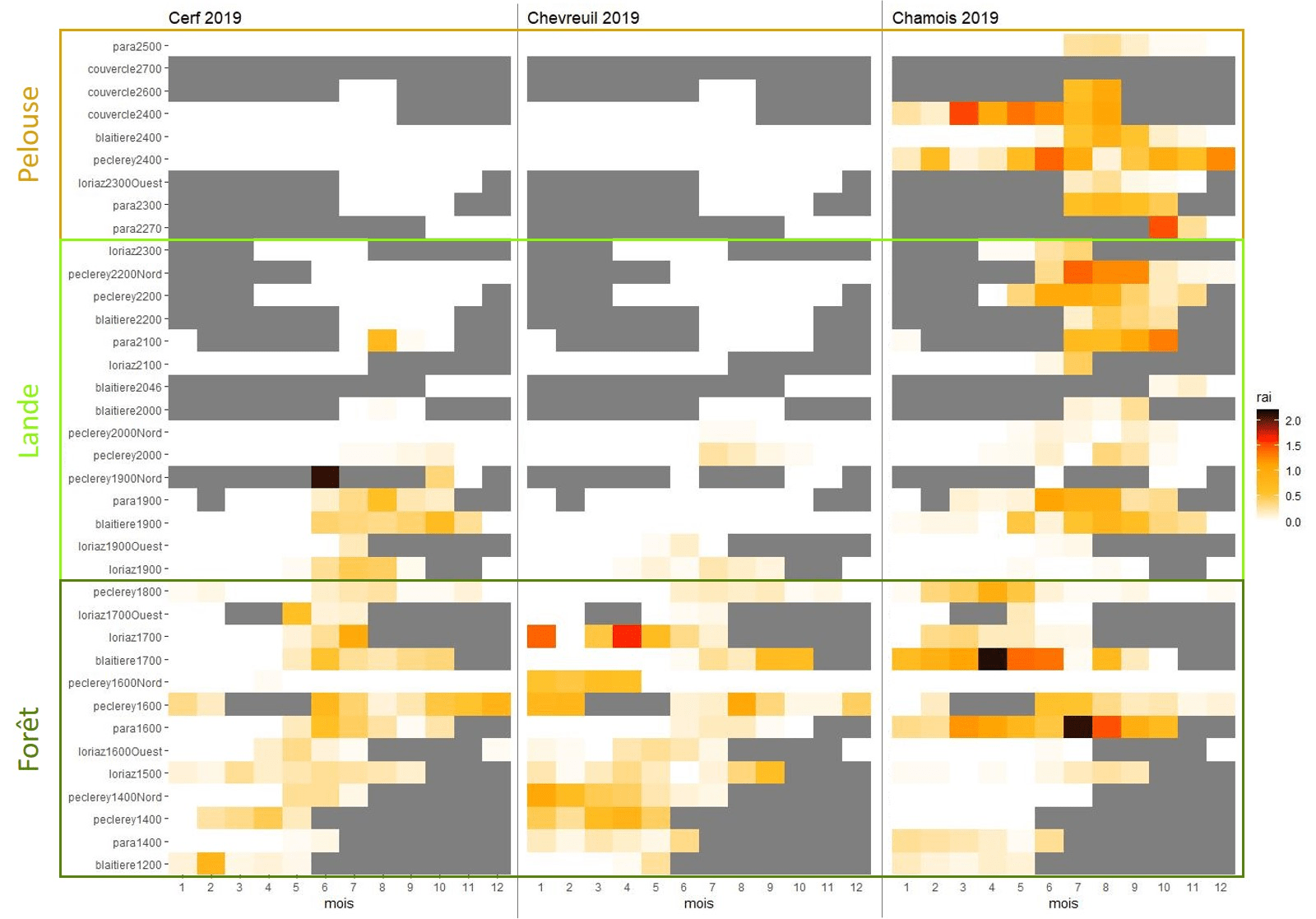Points to remember
- For all studied glaciers, extremely fast plant colonisation can be observed, with plant diversity establishing itself in less than 10 years.
- Once established, plant growth rates vary greatly, depending on environmental factors (climate, substrate, the surrounding vegetation…).
- Emerging habitats in glacier margins serve as novel refuge zones for arctic-alpine flora and fauna and represent a new challenge for biodiversity conservation in the future.
View indicator ➞

Issue: understanding biodiversity trends in the extremely fast-changing areas of glacier forefields
Introductory note: the term “glacier forefield” is the most scientifically accurate and refers to the ice-free zone around glacier snouts. Here we have chosen to use the shortened form “glacier margin” when referring to this same environment.
Glacial margins are vegetation “greening” hotsposts and represent one of the most dynamic habitats in the Alps from an ecological standpoint. To begin with, and as a direct consequence of global warming, alpine glaciers are melting and retreating at an accelerated rate. The latest predictive models developed by glaciologists predict the melting of around 50% of the current glacial surface by 2050 and up to 95% melting by the end of the century in the case of continued high emissions (Zekollari et al. 2019). In a scenario of this kind, glaciologists expect the emergence of around 227,000 km2 of ’new’ terrain globally by the end of the century which is equivalent to the surface area of the United Kingdom (Zimmer et al. 2021, Bosson et al. 2023). Naturally, ecologists are curious to know what these novel mountain landscapes will look like, how quickly they will develop and what biodiversity will take the place of the ice. Here in the Mont-Blanc massif, small pioneer plants already ‘at work’ are clearly one of the keys to better understanding the development of these future ecosystems.
Ecologists are asking themselves a number of questions about plant colonisation in these recently deglaciated habitats. Firstly, what is the time lag between the ice melting and the arrival of the first plants? What are the pioneer species that arrive first and are they consistent from one glacier to the next? Second, once they have become established, at what rate do the plants increase in height, coverage and diversity? Furthermore, how do we explain any possible differences observed in colonisation rates between different glacier margins?

In order to address these various questions, we have researched the flora of three glaciers in the Mont-Blanc massif as part of a larger joint study that includes eight glacier margins in the Alps based on two different methodological approaches (Bayle et al. 2022). The first approach is to conduct botanical surveys along dated areas of glacier retrat, called a ‘chronosequence’. This is based on the hypothesis that knowing when the glacier melted at a given location allows us to estimate the number of years available for vegetation to develop. It is thus a way to substitute space for time in order to get a better understanding of the sequence of plant growth. The second approach is to use satellite imagery available since the 1980s to track vegetation development in real time, allowing us to quantify the rate of plant colonisation over the years. The convergence of these two complementary approaches on the glaciers of the Tour, Pèlerins and Orny offers us some partial answers to our initial questions.
Relevance Life in the starting blocks: ice melting and plant colonisation
For the three glacier margins investigated in the Mont-Blanc massif in 2019, plants were regularly found up to the very front of the glaciers. Between 5 and 10 species of plants are often present in the two-metre-square sections, including in the most recently examined one (2009-2018). In this band, the presence of vegetation indicates that pioneer plants are able to establish themselves in less than 10 years in these habitats. As a reminder this environment is quite hostile to plant life, characterized by an absence of soil and organic matter, a substrate ranging from smooth bedrock to granite blocks the size of an Aiguille du Midi cable car, long periods of snow cover, cold temperatures with freezing even in summer, very strong UV radiation and often very active slopes and erosion. It goes without saying that these little plants are resilient and remarkably tenacious! As our research reveals, it turns out that these extremely unstable and rocky environments are home to a considerable and rapidly increasing plant diversity.
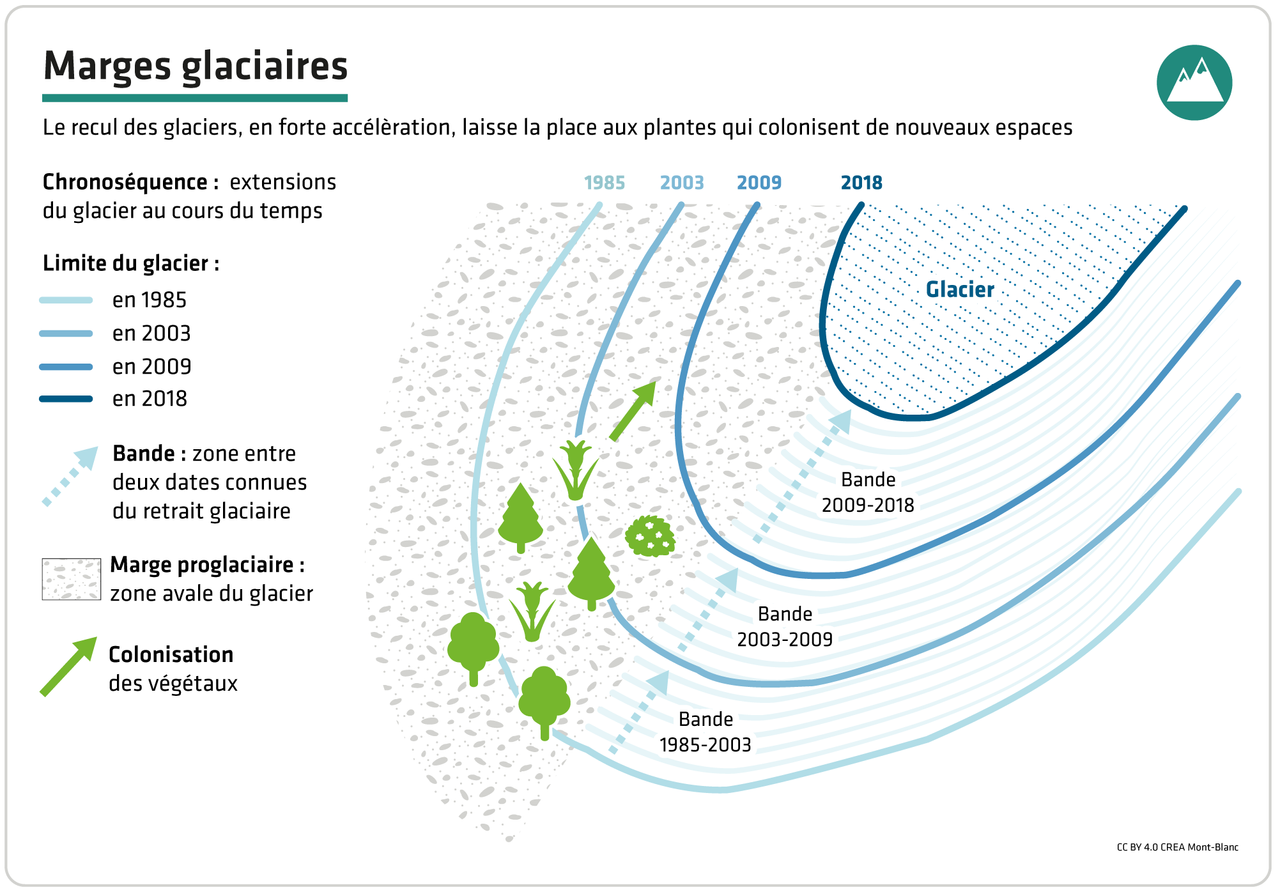
Among the pioneer species, there are a few regulars (false mossy saxifrage and the alpine daisy, for instance) but also some surprises: at the Glacier des Pèlerins, we found trees (birch, larch and spruce) and willow shrubs that were growing less than 15 years after the ice melted. Finally, at the Orny glacier in Switzerland and on the French side of the Tour glacier, Saussure’s androsace was one of the first plants to be noticed in a deglaciated area between 2003 and 2009. Overall, we found that the floristic composition varies greatly across sites and we did not observe a consistent pattern of succession.
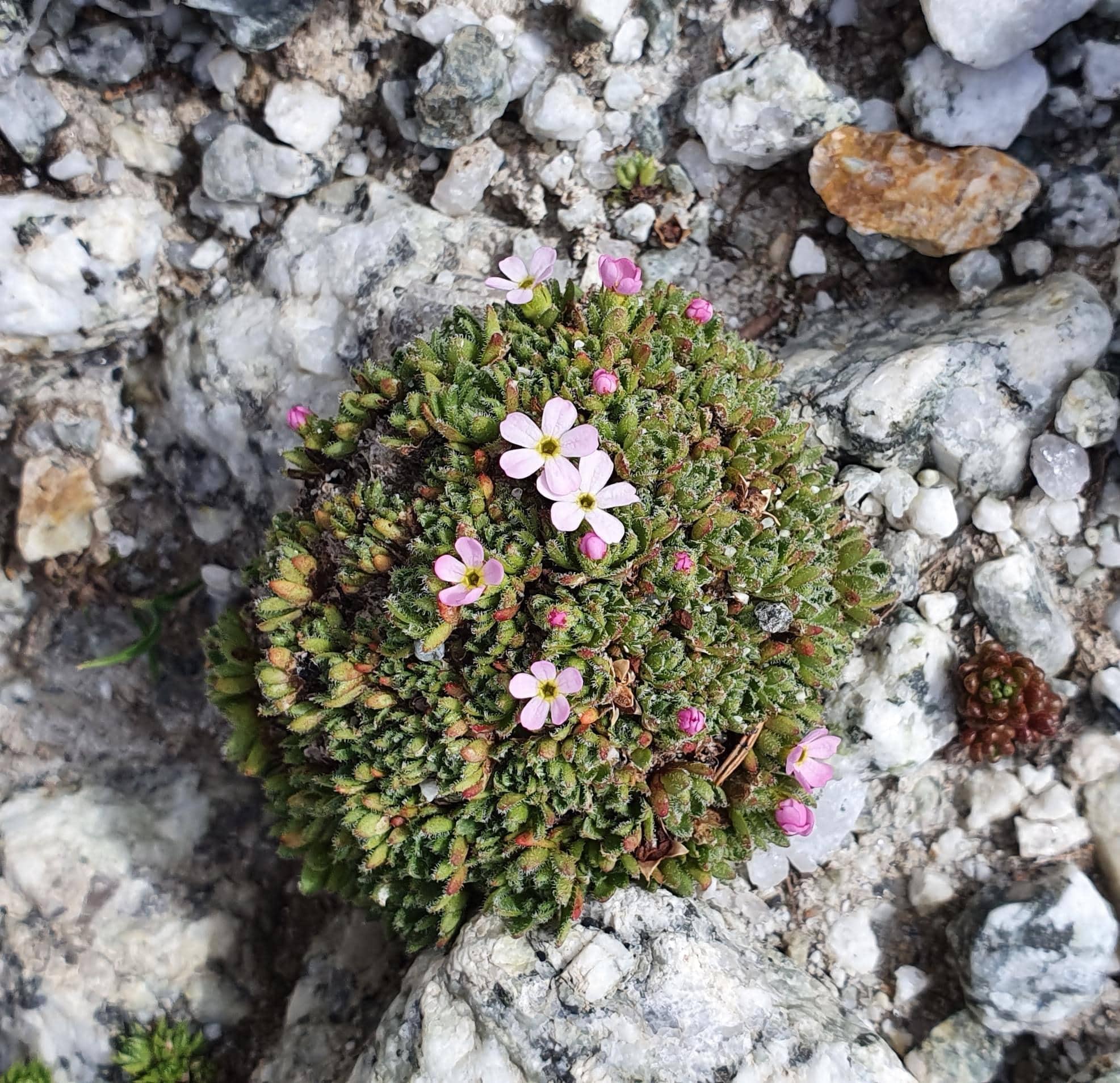
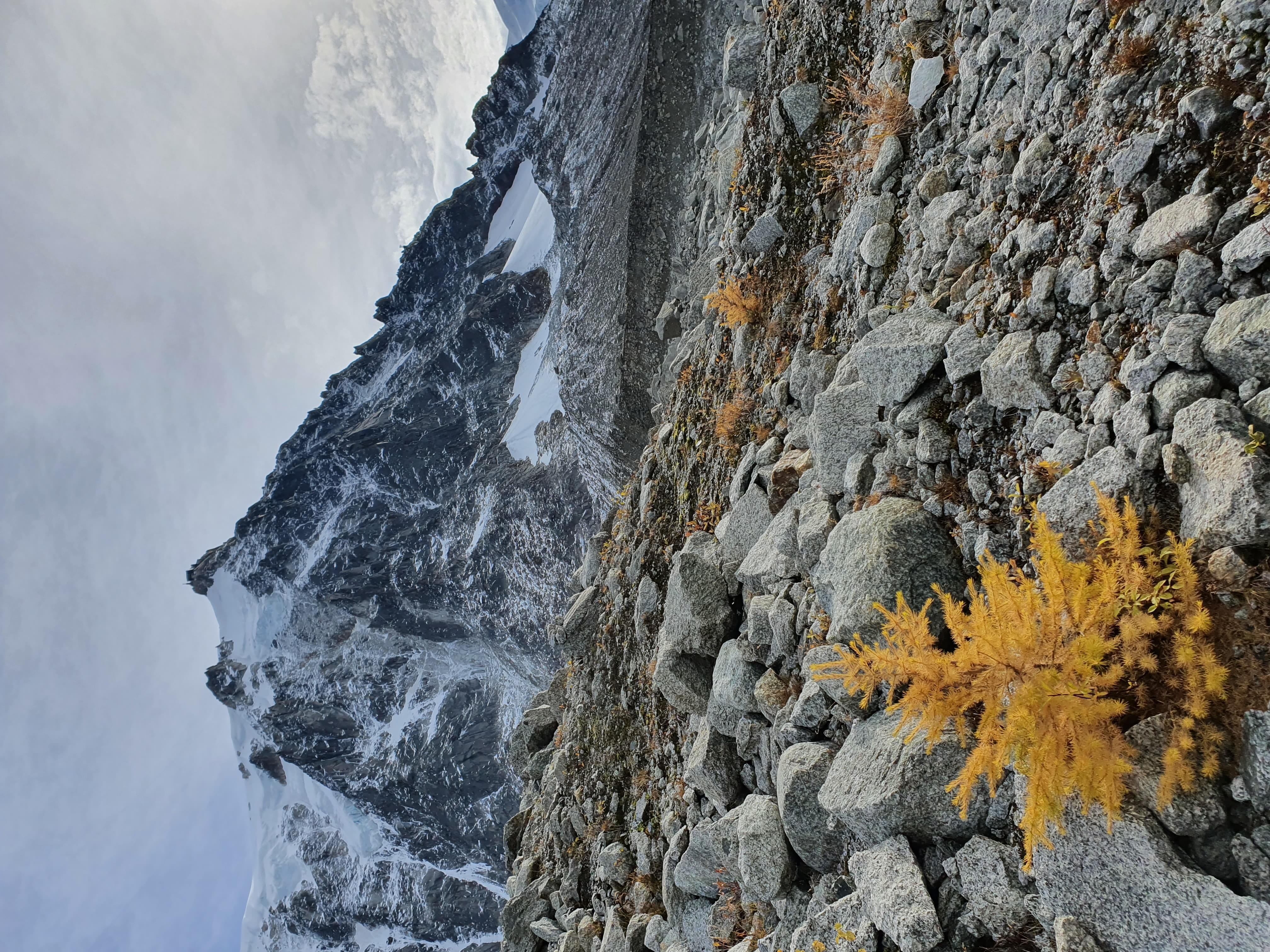
Plants arrived quickly in the wake of glacier retreat in all three glacier margins, however once established, rates of plant growth varied substantially from one site to the next. For example, the height and coverage of the plant canopies increase more quickly at the Tour compared to the Pèlerins and Orny: the last two display a slower dynamic, especially in terms of growth (vertical and horizontal). Two hypotheses could explain this result. Firstly, the climate remains a very important parameter and the Orny glacier is the highest in elevation among the three with a margin at approximately 2700m. This implies longer snow cover, lower summer temperatures and consequently less energy available for the plants. The margin of the Pèlerins is the lowest of the three (2200m) and yet the dynamic is still much slower compared to the Tour. A second hypothesis concerns the substrate and geomorphological environment - the ground in the Pèlerins margin is particularly chaotic and chracterized by large, unstable granite boulders, which can make plant estabishlment more difficult and risky due to geomorphic disturbance. Field observations suggest that the slight decrease in diversity (number of species) and coverage seen at Orny between the years 2003-2009 and 1984-2003 can be explained by an alluvial zone strongly disturbed by a network of small streams emanating from the glacier snout. In summary, it becomes quickly apparent that time does not explain everything - contrasting rhythms of plant colonisation are also strongly linked to the climatic and geomorphological environments found in glacier margins.
Development of mountain landscapes and biodiversity in the future
Satellite images corroborate the results of botanical surveys and even allow us to go further regarding the question of the time lag between the ice melting and the arrival of vegetation (Bayle et al. 2022). 2022). Indeed, the satellite detects the arrival of vegetation in just 2 to 3 years at the Tour following the ice melt, whereas this time is longer at Orny and Les Pèlerins (from 4 to 6 years). It was statistically possible to explain these varying lag times as a result of climate as well as distance to the nearest patch of productive vegetation around the glacier margins. In the end, these pioneer plants ultimately turn out to be quite orderly and their growth trajectories can be largely explained by environmental factors at the margins, such as climate, geomorphological disturbance and proximity to surrounding vegetation.

Outlook: a challenge for the mountain regions of tomorrow
It seems essential to gain a better understanding of the burst of vegetation following glacier retreats and on these glacier margins, both in the Mont-Blanc massif and for the Alps as a whole. This knowledge would provide foresights about what future alpine landscapes will look like… and even if we will definitely miss the glaciers, the greenery and rocks will also make for magnificent landscapes! The greening of these periglacial environments is proving to be highly dynamic and we are observing the emergence of new ecosystems within a few years. In the context of climate change and increasingly severe droughts and heatwaves in the coming years accompanied by reduced snowpack even in alpine areas, it is possible that glacier margins will become real oases, with summer water flow ensured by the melting ice upstream… at least until the glacier completely disappears!
Today, these rapidly emerging ecosystems already serve as novel habitats (refugia) for arctic-alpine fauna fleeing to higher altitudes to find suitable habitats on mountains which are becoming warmer. When the botanical surveys were carried out, we frequently came across signs of animals: droppings from mountain hares, chamois or rock ptarmigan. This indicates that these recently deglaciated areas are becoming new habitats not only for mountain plants but also for wildlife.
Finally, glacier margins and the biodiversity they harbour are becoming a new conservation challenge. If the first question is simply to better understand and familiarise ourselves with these emerging ecosystems, the next question that rapidly arises is how to conserve and manage the new ecosystems previously buried under the ice. Given how quickly the map is changing, it seems that a key challenge will be to keep land managers up-to-date on biodiversity and habitat trajectories in glacier margins in order to inform conservation strategies in the years ahead.
References
Bayle, A., Carlson, B. Z., Zimmer, A., Vallée, S., Rabatel, A., Cremonese, E., Filippa, G., Dentant, C., Randin, C., Mainetti, A., Roussel, E., Gascoin, S., Corenblit, D., and Choler, P.: Local environmental context drives heterogeneity of early succession dynamics in alpine glacier forefields, EGUsphere (preprint), https://doi.org/10.5194/egusphere-2022-1164, 2022.
Zekollari, H., Huss, M., & Farinotti, D. (2019). Modelling the future evolution of glaciers in the European Alps under the EURO-CORDEX RCM ensemble. The Cryosphere, 13(4), 1125-1146.
Zimmer, A., Beach, T., Klein, J. A., & Recharte Bullard, J. (2022). The need for stewardship of lands exposed by deglaciation from climate change. Wiley Interdisciplinary Reviews: Climate Change, 13(2), e753.
Bosson, J. B., Huss, M., Cauvy-Fraunié, S., Clément, J. C., Costes, G., Fischer, M., … & Arthaud, F. (2023). Future emergence of new ecosystems caused by glacial retreat. Nature, 620(7974), 562-569.
Partners
Autres enjeux qui pourraient vous intéresser...

Giants of ice on their knees
The glaciers that are symbolic of the massif are disappearing. A challenge for humanity but new spaces for other life?
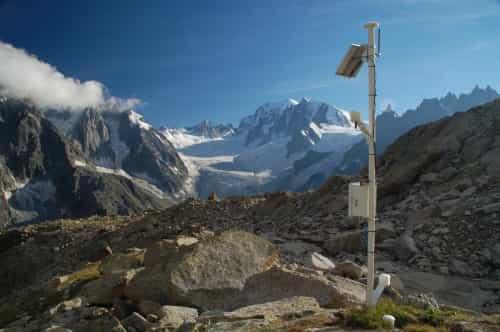
The Mont-Blanc sees red
Temperatures, so crucial to mountain life, are rising. Consequences vary from season to season.
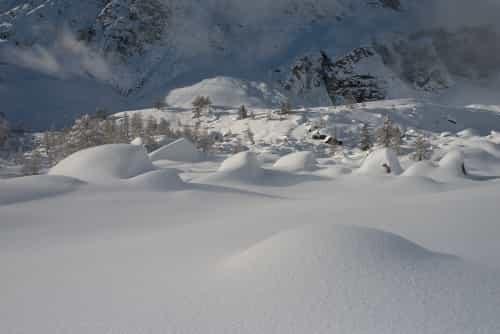
Marked decline in snow cover
Snow is a unique feature of the mountains. Its disappearance at certain seasons and altitudes is a major change for living things.
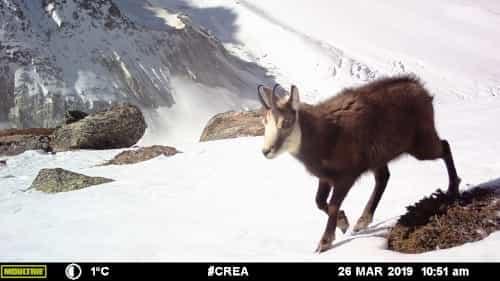
Herbivores at every level
The distribution of wild herbivores is highly dependent on the evolution of vegetation. How will these species adapt to changes in seasons and environmental composition?









